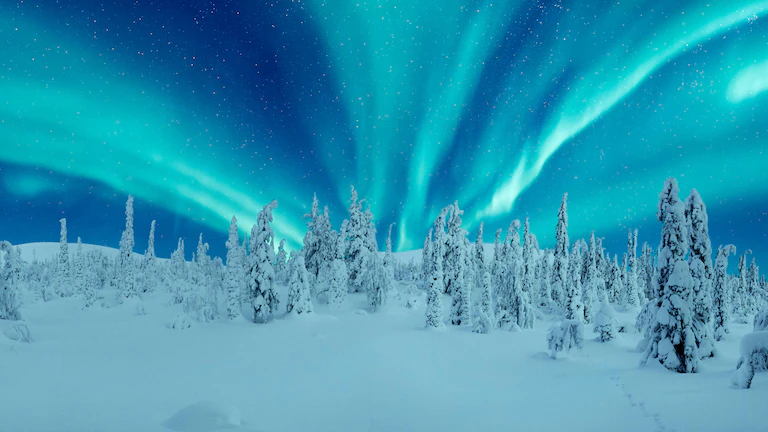What are the Northern Lights?
In the northernmost reaches of the Earth, there’s magic in the skies which is an elusive, colorful sort of mystical presence that transforms the heavens into a luminescent light show. Read on to discover everything you need to know about this most magnificent of displays…”The Northern Lights”
Nothing compares to the Northern Lights, as it is an ethereal display of vivid color that runs across the sky. Nature’s greatest display has captivated humanity for thousands of years, and the Northern Lights’ unpredictability and rarity only adds to the attraction of tracking them down and viewing the beautiful natural phenomena in person. It’s a thrilling event that’s at the top of most travelers’ bucket lists.
What are the Northern Lights?

The Aurora Borealis, often known as the Northern Lights, is a vivid light show that occurs when electrically charged particles emitted by the sun clash with the Earth’s atmospheric gasses. These lights appear around the magnetic poles of the southern and northern hemispheres, an area known as the auroral zone. The phenomenon in the southern hemisphere is known as the Southern Lights or Aurora Australis.
How are the colors of the Northern lights formed?
The Earth’s atmosphere is made up of many atoms, such as oxygen and nitrogen, and it is the collision of these atoms with sun particles that causes the colors seen in the northern lights. The colors of the auroras vary based on the atoms colliding and the composition of the Earth’s atmosphere at various heights. The strongest and most common hues are yellow and green, which are caused by oxygen interactions at roughly 60 miles above sea level. Pink, violet, and blue hues are also frequently seen.
Where to see the Northern Lights?

The auroral zone, which runs over parts of Scandinavia, Iceland, Greenland, Canada, Alaska, and Siberia, is considered to be the best opportunity for seeing the elusive Northern Lights.
When is the best time to see the Northern Lights?
The long dark nights between September and March offer the ideal viewing conditions for the Aurora Borealis. But it depends on where you travel. There are some places where you may catch the lights from late August to early April, but the winter season comes earlier and the darker evenings give a better chance of getting a nice view.
Conclusion
The Northern Lights, named after the Roman goddess of the morning, Aurora, first emerged in the early hours of our planet’s existence. Humans have long been attracted by the atmospheric arabesques (intricate designs) that illuminate the skies. In ancient times, both in the West and in China, the Northern Lights were thought to resemble snakes or dragons in the sky. Tales of fantastic celestial monsters and deities arose, and such stories taught man to respect, fear, and idolize the stars.
In some countries, the aurora is described as the last breath of brave soldiers – the lights are a glittering, vibrant bridge that leads fallen warriors to their final resting place. In Iceland, the Northern Lights were said to relieve the pain of childbirth.but pregnant women should never look at them directly, otherwise their child would be born with eye problems but pregnant women should never look at them directly, otherwise their child would be born with eye problems. The Northern Lights have been associated with magic and mystery since the dawn of human civilization. Despite our awareness of the science underlying the spectacular show that adorns the northern sky today, the Northern Lights (Aurora Borealis) continue to awe us.






